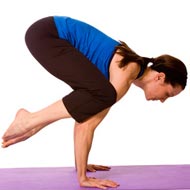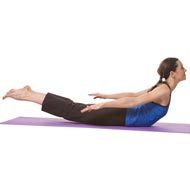- Raja yoga
- Yoga Stretches
- Jivamukti Yoga Poses
- Yoga Tree Pose
- Sun and Moon Yoga
- Wind Removing Pose
- Hare Pose
- Accomplished Pose
- Urdhva Mukha Pinch Mayurasana
- Revolved Abdomen Pose
- Raised Foot Pose
- Scorpion Pose
- Butterfly Pose
- Half Tortoise Pose
- Revolved Twist
- Balancing Stick Pose
- Cat Pose
- Supported Shoulderstand
- Handstand
- Happy Baby Pose
- Firefly Pose
- Scale Pose
- Side Plank Pose
- Upward Facing Two-Foot Staff Pose
- Reclining Big Toe Pose
- Stick Pose
- Revolved Head-to-Knee Pose
- Full Boat Pose
- Upward Extended Feet Pose
- Yoga arm balance poses
- Core Yoga
- Inversion Yoga Poses
- Seated And Twist Yoga
- Horse Pose
- Cobbler Pose
- Seated Wide Angle Pose
- The Compass Pose
- Half Crow Pose
- Bound Half Moon Pose
- Lotus Pose
- Reverse Warrior Pose
- Fixed Firm Pose
- Back-bend Poses
- Forward bend Poses
- Sarvangasana
- Ashtanga Yoga Poses
- Warm up poses
- Seated Poses
- Seated Forward Bends
- Chair Poses
- Standing Poses
- Standing Balancing poses
- Yoga Asanas
- Hatha Yoga Asanas
- Yoga Postures Online
- Partner Yoga Poses
- Anusara Yoga Poses
- Advanced Yoga poses
- Restorative Yoga Poses
- Kids Yoga Poses
- Beginning Yoga Postures
All you need about Crane Pose - Bakasana
The crane pose in yoga, also known as the Bakasana, is a compact arm balancing posture that helps in strengthening the arms as well as the abdominal organs. The anatomical focus of this pose is the wrists.
By regularly practicing the Bakasana, the spine stretches to its full length and this increases its flexibility largely.
This posture is also very beneficial in strengthening the arms, shoulders, and joints and it helps develop a better sense of concentration, co-ordination, and balance.
Steps :
- While in a squatting position on a yoga mat, maintain equal distance between both the knees and keep the feet flat on the mat. Then place the palms in between the knees and flat on the ground while maintaining the knees and elbows at the same level.
- Bend the torso forward while lifting both the legs up so that the whole body balances solely on the palms. While in this posture, maintain a straight gaze so that the body balances properly.
- Finally to return to the original position, slowly bring the feet down on the ground and go back into a Tadasana posture.
Precautions :
- It is important to keep the neck straight in this posture to avoid sprains and strains.
- People who suffer from neck problems like spondilitis should always practice this asana under the guidance of a trained yoga expert.
- Pregnant women and those suffering from carpal tunnel syndrome should also not practice this asana.
Beginner’s Tip :
Even though this asana is not very difficult as compared to some of the other asanas in yoga, beginners should avoid holding this position for too long. Even while balancing the entire body weight on the wrists, it is advisable to avoid too much strain, which can result in injuries. The most important beginner’s tip for crane pose is that the heels and hips are close together with the body tucked in tight. Most beginners keep the hips and heels far apart while practicing this pose, which makes it even more difficult to get into the right position. Once the feet are off the ground, the upper arms should be placed against the shins for better support while the groin is pushed into the pelvic region. This makes it easier to balance the body in this position.
Benefits To Body Parts :
- It helps in strengthening the wrists and arms.
- It stretches the upper back and increases the flexibility and elasticity of the spine.
- It strengthens and tones various muscles and organs in the abdominal region.
- It also opens up the groin region.
- The sense of balance, concentration, and co-ordination improves by practicing this posture regularly.
You can hold this posture for at least 20 seconds to a minute while breathing normally and repeat it once or twice consecutively.
Therapeutic Applications :
Besides the physical benefits mentioned above, there are also certain therapeutic applications of this yoga asana.
- Regular practice of this asana helps us develop deeper trust in ourselves, which in turn helps us take up new challenges in life.
- A sense of positive thinking is developed and feelings of hesitation and doubt reduce considerably.
- Physically, the functioning of the digestive system improves and problems like heartburn and acidity reduce.
Variations :
You can also perform this asana in other variations for more health benefits. One of the most accessible variations for crane pose is the Parsva Bakasana also known as the side crane pose. You can perform this asana by following the steps mentioned below:
- Assume a squatting position while keeping your knees together as opposed to the original Bakasana. While exhaling, turn the torso to the right while bracing the left elbow to the outer part of the right knee. The upper arm should be near the armpit while the knee is firm against the arm.
- Put your hands on the floor with the palms flat on the ground and while leaning to the right lift the feet off the floor while exhaling. Try to keep the arms as straight as possible while doing this asana.
- Hold this position for at least 30 seconds and then return to the original squatting position while exhaling. The same technique is should be used for the other side as well.
Most students who are new to Bakasana may find it difficult initially to lift themselves off the floor and can therefore use a few modifications or props to help with the lift. In such cases, it is helpful to squat on a block or some other heightened surface so that the feet are a few inches above the floor already and this makes the lift easier. You can also use a partnering technique in Bakasana for better balance. Your partner can support you as you lean forward and lift your feet off the ground in this position, so that you do not topple over. You can follow this technique until you are confident enough to do it yourself.
Preparatory Poses :
- Hero Pose (Virasana),
- Child Pose (Balasana),
- Downward Facing Dog Pose (Adho Mukha Svanasana),
- Bound Angle Pose (Baddha Konasana)
- Plank Pose
Follow Up Poses :
- The plank pose
- Downward Facing Dog Pose (Adho Mukha Svanasana)
- Four Limb Staff Pose (Chaturanga Dandasana)
While performing the crane pose, one may experience pain in the wrists to some degree. Curling the fingers slightly instead of spreading them out can help avoid this pain.



